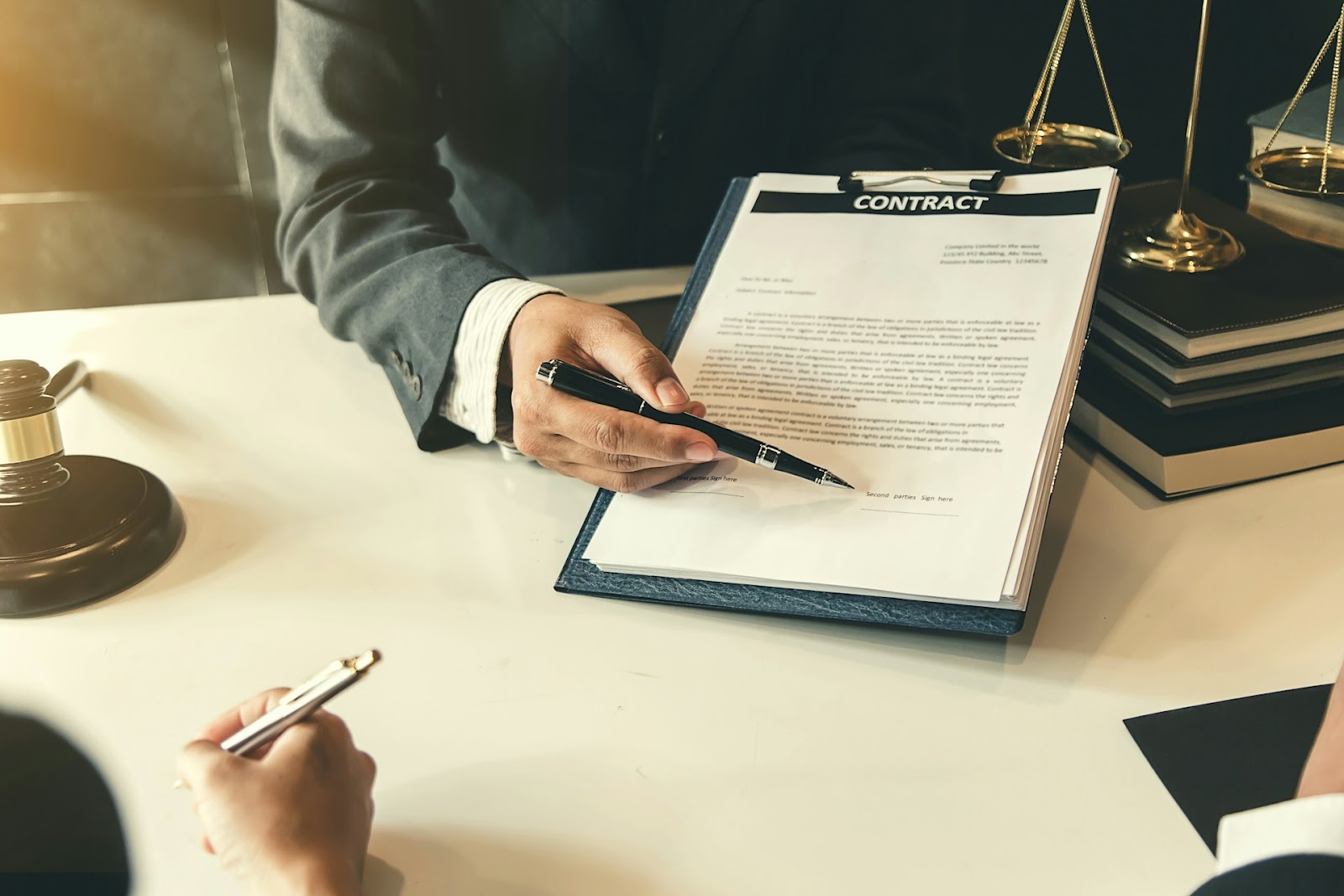领英
Facebook
Instagram
优酷
Intellectual property translation is crucial for protecting your innovative ideas, creative works, and unique brands in international markets. It involves accurately translating complex legal documents related to patents, trademarks, copyrights, and designs. This specialized field requires both language skills and a deep understanding of intellectual property (IP) law.
When you create something groundbreaking, such as a new technology or artistic masterpiece, you need to ensure that it is safeguarded across different countries. This means obtaining legal protection for your creations through patents, trademarks, or copyrights in each jurisdiction where you plan to operate.
However, the process of securing these rights can be complicated by language barriers and varying legal systems. That's where intellectual property translation comes into play.
With the rise of globalization, businesses are increasingly looking beyond their domestic borders for growth opportunities. Expanding into foreign markets allows companies to tap into new customer bases and increase their revenue potential.
However, entering a new market often requires navigating through its specific legal requirements and regulations. This is especially true when it comes to protecting your intellectual property rights.
By investing in professional translation services for your IP-related documents, you can ensure that all parties involved understand the terms and conditions of the agreements being made. This clarity will help prevent misunderstandings or disputes down the line.
Intellectual property law is highly technical and nuanced. Each country has its own set of rules governing how IP rights are granted and enforced. Therefore, it's essential that any translations of legal documents related to your IP are done by experts who are well-versed in both the source language (e.g., Spanish or Chinese) and the target language (e.g., English).
Mistranslations can have serious consequences - they may render your patents invalid, weaken your trademark protection, or even lead to costly litigation battles. To avoid such pitfalls, it's crucial to work with translators who specialize in intellectual property law and have experience handling similar cases.
In addition to linguistic accuracy, effective intellectual property translation also requires an understanding of cultural nuances. Different cultures may have varying perceptions of what constitutes originality or creativity - concepts that lie at the heart of IP protection.
For example:
These cultural factors can influence how your IP rights are viewed and enforced in different jurisdictions. By incorporating cultural insights into your translations, you can better position yourself to navigate these complexities.
As businesses continue to expand globally, the need for specialized services like intellectual property translation becomes increasingly important. Protecting your innovations across borders requires more than just filing applications with local authorities; it necessitates clear communication between all parties involved.
By partnering with professional translators who understand both the legal intricacies and cultural contexts surrounding intellectual property issues, you can enhance your chances of successfully securing international protection for your valuable assets.
If you're interested in learning more about our intellectual property translation services, please don't hesitate to reach out!

Intellectual property (IP) refers to creations of the mind, such as inventions, artistic works, designs, and symbols used in commerce. When expanding into international markets, it's crucial to understand the different categories of IP and their specific translation requirements.
With advancements in technology, translation challenges have evolved beyond traditional text-based documents. Here are two key areas where modern translation solutions come into play:
International IP protection involves navigating a complex network of national laws and international agreements. Each country has its own systems for registering IP rights, enforcing them, and establishing legal standards.
When seeking protection in multiple jurisdictions, you need to be aware of these varying requirements. Here are some key components of the global IP landscape:
These legal frameworks create a multilayered system of protection where accurate translation becomes crucial for compliance purposes.
For instance:
By understanding the intricacies of intellectual property and its global protection mechanisms, businesses can effectively navigate the world of IP rights when expanding internationally.
When pursuing a foreign IP license, accurate translation becomes the cornerstone of successful international agreements. You cannot afford to underestimate how mistranslated technical specifications or legal clauses can derail licensing negotiations or create costly disputes down the line.
Language barriers create significant obstacles in IP licensing agreements, particularly when dealing with complex technical documentation and legal terminology. A single mistranslated patent claim or trademark description can lead to misunderstandings about the scope of rights being licensed. Certified translation services ensure that both parties understand exactly what intellectual property rights are being transferred, modified, or restricted under the licensing agreement.
The stakes become even higher when you consider that different jurisdictions have varying legal requirements for IP protection and enforcement. What constitutes fair use in one country may be considered infringement in another. Professional language translate services help you navigate these nuances by ensuring your licensing agreements comply with local legal standards and cultural business practices.
While document translation online platforms have made accessing translation services more convenient, it's crucial to verify that these services meet the certification requirements of your target jurisdictions. Many countries require sworn or certified translations for legal documents, including IP licensing agreements, to be valid in court proceedings. This is where certified translation services become indispensable.
Compliance with local laws extends beyond simple language conversion. You must ensure that translated documents accurately reflect the legal concepts and terminology recognized in each jurisdiction. This includes understanding how different legal systems interpret concepts like joint ownership, exclusive licensing rights, and territorial restrictions. Proper translation helps prevent enforcement challenges that could compromise your IP protection strategy.
In addition to these complexities, there may also be instances where personal documents such as passports or diplomas need to be translated for legal purposes related to IP licensing. For such cases, certified passport translation services and diploma translation services can provide the necessary support to ensure accuracy and compliance with local regulations.
Document translation services are crucial in international IP licensing. Several types of documents need accurate translation to maintain legal validity across different jurisdictions. When pursuing Intellectual Property Translation for a Foreign IP License, you'll come across various document categories that require specialized translation knowledge.
The following are the main types of IP documents that typically require translation:
The following legal documents also require careful translation:
Each type of document necessitates translators with specific legal and technical knowledge to uphold accuracy and guarantee that your IP rights remain safeguarded in global markets.

Apart from the primary IP documents and essential legal paperwork mentioned earlier, there are additional areas where specialized translation services can prove advantageous:
Global IP licensing operates within a complex framework of international treaties that establish standardized procedures and documentation requirements across participating countries. These agreements create both opportunities and obligations for translation services when companies seek to protect and license their intellectual property internationally.
The EPC governs patent protection across 39 European countries, requiring applicants to translate their documents into English or other official languages when filing applications. The EPC mandates that patent documents be translated into the official language of each designated country where protection is sought, creating substantial translation workloads for licensing agreements involving European markets.
The PCT streamlines international patent applications through a unified filing system. Document translation becomes essential when entering the national phase, as applicants must translate their applications into local languages of target countries. This treaty affects licensing strategies by determining when and where translations are required during the patent prosecution process.
The Madrid System enables trademark protection across multiple countries through a single application. Companies seeking to expand their trademark rights must ensure their trademark descriptions and classifications are accurately translated for each designated territory, directly impacting licensing opportunities in those markets.
The Hague System provides international design protection with specific translation requirements for design descriptions and claims.
The Berne Convention establishes copyright protection standards internationally.
The TRIPS Agreement sets minimum IP protection standards for WTO members.
These treaties impose specific translation obligations that vary by jurisdiction and IP type:
Working with a qualified translation company or finding reliable document translation services becomes crucial for compliance. Companies often search for "translation near me" to identify local providers familiar with regional treaty requirements and legal frameworks governing IP licensing in their target markets.
Translation plays an essential role not only in facilitating smooth operations in global supply chains but also in preserving endangered languages, ensuring their cultural significance is maintained for future generations. For instance, professional Bulgarian translation services can help businesses accurately communicate in Bulgarian while maintaining cultural relevance in their documents. Moreover, specialized academic translation services can enhance academic success by ensuring precise translations of research papers, theses, and scholarly articles in over 35 languages.
Technical complexity presents one of the most significant hurdles when translating IP documents across international borders. When you need to translate Chinese patent applications for pharmaceutical compounds or engineering specifications, the terminology requires deep subject matter expertise beyond basic language skills. Each specialized field contains unique vocabulary that doesn't always have direct equivalents in target languages.
Consider a biotechnology patent describing molecular structures - the translator must understand both the scientific concepts and how different patent offices express these ideas. German patent terminology for chemical processes differs substantially from Japanese approaches, creating layers of complexity that demand specialized knowledge.
Legal precision becomes equally challenging when every word translate can impact enforceability and compliance. IP licensing agreements contain specific legal terms that carry different meanings across jurisdictions. A single mistranslation in warranty clauses or liability limitations can expose parties to unexpected risks or void critical protections.
The stakes escalate when dealing with cross-border licensing disputes. Courts scrutinize translated documents for accuracy, and inconsistencies between original and translated versions can undermine your legal position. You face particular challenges when translating concepts that exist in one legal system but not another - such as specific types of industrial design protection or trade secret classifications.
These challenges multiply when licensing agreements involve multiple countries with distinct legal traditions, requiring translators who understand both technical subject matter and comparative law principles.
However, it's not just the traditional sectors like pharmaceuticals or engineering that face these challenges. The gaming industry, for instance, also grapples with its own set of unique translation hurdles. Overcoming Translation Challenges in Gaming requires tailored strategies to ensure a smooth global player experience.
Key translation challenges include:
When dealing with Intellectual Property Translation for a Foreign IP License, it's crucial to choose the right certified translation company. You need translators who have both extensive legal knowledge and technical expertise in your specific IP field. For example, patent translations in the pharmaceutical industry require an understanding of complex chemical compounds, while software licensing requires familiarity with coding terminology and digital rights management.
While professional translation services near me may seem convenient, they often lack the specialized qualifications necessary for IP work. This is why it's important to seek out agencies that hold ISO 17100 certification and employ translators with relevant legal backgrounds. These professionals are well-versed in the intricacies of different legal systems and can effectively navigate the complexities of cross-border licensing agreements without sacrificing accuracy.
To ensure consistency across multiple documents, it's essential to utilize translation memories as your foundation. These databases store previously translated segments, guaranteeing that identical terms receive uniform treatment throughout your licensing portfolio. This technology not only speeds up the process when time is of the essence but also upholds quality standards.
Glossaries and style guides are indispensable tools for large-scale IP projects. By creating comprehensive terminology databases that include:
you can further enhance consistency and efficiency in your translations.
To maintain high-quality standards, it's important to implement multiple review stages as part of your best translate practices. Initial translations should undergo technical review by subject matter experts, followed by legal verification to ensure compliance with target jurisdiction requirements. This dual-layer approach helps catch both technical inaccuracies and legal inconsistencies before documents are submitted to regulatory authorities.
When it comes to sensitive documents such as academic transcripts or course guides, it is essential to engage professional services that specialize in these areas. For instance, ASAP Translate offers certified translations that support students in pursuing global educational opportunities. Similarly, their course guide translation services ensure accurate translations of syllabi and grading criteria, which are vital for academic success.
Furthermore, if you need to translate financial documents as part of your licensing agreement, it is crucial to ensure accuracy and compliance across borders. This is where specialized financial document translation services come into play.
In addition to these services, you might also find yourself needing email translation services for clear communication in business or legal matters across different languages.
Lastly, if your IP translation needs include Hebrew language documents, consider leveraging professional Hebrew translation services that ensure accuracy and cultural relevance in your documents.

Certified translation services should provide comprehensive quality reports that outline their review processes. It is important to have transparency regarding how they handle confidential information, maintain version control, and ensure accuracy across different language pairs. These protocols become especially critical when dealing with time-sensitive licensing negotiations where mistakes could jeopardize entire agreements.
Modern image translation technology has transformed how you handle complex IP documents containing diagrams, technical drawings, and multilingual patent illustrations. Advanced document OCR translation services now process scanned patent applications and trademark registrations with remarkable accuracy, extracting text from images while preserving formatting and technical specifications crucial for licensing agreements.
Photo translation apps equipped with sophisticated OCR capabilities enable real-time translation of IP documents during international negotiations. You can instantly translate technical drawings, product labels, and design specifications directly from your mobile device using online tools, accelerating the due diligence process in foreign licensing deals.
The integration of image translation solutions with traditional translation workflows creates powerful hybrid systems. These technologies handle initial document processing and terminology extraction, while human translators focus on legal nuances and technical accuracy. This combination delivers:
AI-powered translation memories now learn from your specific IP terminology, building custom databases that recognize recurring technical terms and legal phrases. When combined with human expertise, these systems maintain the precision required for international licensing while dramatically reducing processing time.
In this context, certified translations become particularly important. They ensure accuracy, legality, and efficiency in the translation process, meeting global standards which is crucial in the realm of international licensing.
Cloud-based translation platforms integrate seamlessly with document management systems, allowing you to track translation progress across multiple jurisdictions simultaneously. This technological infrastructure supports complex licensing projects involving dozens of countries and hundreds of documents, ensuring consistency and compliance throughout the entire process.
Selecting a professional document translation company for your IP licensing needs requires careful evaluation beyond basic cost considerations. You need a translation agency that understands the intricate legal and technical demands of intellectual property documentation across multiple jurisdictions.
When searching for the best translate agency near me, focus on these critical factors:
Look for agencies with:
Ensure the agency's translators possess:
Inquire about the agency's quality assurance measures, such as:
ISO certifications serve as reliable indicators of translation quality and process management. Look for agencies holding ISO 17100:2015 for translation services and ISO 27001 for information security management. These standards demonstrate systematic approaches to quality control and data protection.
Client testimonials provide valuable insights into real-world performance. Examine case studies involving similar IP licensing projects, paying attention to:
Reference verification through direct client contact offers deeper understanding of agency capabilities. Ask previous clients about their experience with deadline management, technical accuracy, and communication throughout the translation process.
In addition to these aspects, if you are also considering a career shift into a multilingual job market, it's beneficial to tailor your resume accordingly. This could involve utilizing the services of a translation agency that specializes in crafting resumes for global employers.
You should also evaluate the agency's technology infrastructure, including translation memory systems and terminology databases specific to IP documentation. These tools ensure consistency across multiple documents while maintaining the precision required for international licensing agreements.
Navigating the complex world of Intellectual Property Translation for a Foreign IP License requires expertise that goes beyond just knowing languages. You need professionals who understand both the complicated legal systems that govern international IP rights and the specific technical details of your industry.
The risks are too great to settle for anything less than perfect translation. Even one mistake in translating a patent application or licensing agreement can lead to:
When you hire a certified intellectual property translator, you're making an investment in accuracy that safeguards your inventions and business interests. These experts know how different countries interpret IP terms and can navigate the subtle distinctions that can make or break international agreements.
Document translation online services have made it easier than ever to access professional IP translation. You can now find specialized translators who have both legal knowledge and technical expertise in your field, whether it's pharmaceutical patents, software copyrights, or industrial designs.
Your intellectual property is the result of years of innovation and significant investment. Protect these valuable assets by working with translation professionals who understand the legal consequences of every word, phrase, and technical term in your cross-border IP dealings. The right translation partner becomes an extension of your legal team, ensuring your IP rights stay secure as you enter new markets.